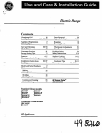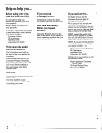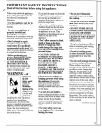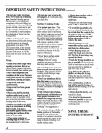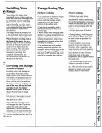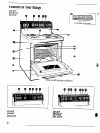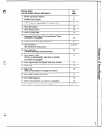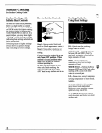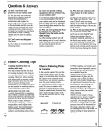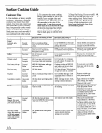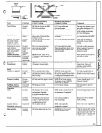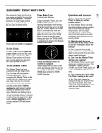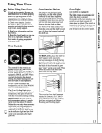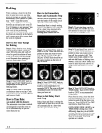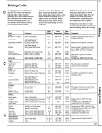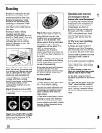
~ORTANT SAFETY INSTRUCTIONS (continued)
● Do not use water on grease
fires. Never pick up a flaming
pan. Smother flaming pan on
surface unit by covering pan
completely with well-fitting lid,
cookie sheet or flat tray. Flaming
grease outside a pan can be put
out by covering with baking soda
or, if available, a multi-purpose
dry chemical or foam type fire
extinguisher.
c When cooking pork, follow
the directions exactly and always
cook the meat to an internal
temperature of at least 170”F.
This assures that, in the remote
possibility that trichina may be
present in the meat, it will be
killed and the meat will be safe
to eat.
Oven
c
Stand away from range when
openingoven door.Hot air or
steam whichescapescan cause
burns to hands,face and/or eyes.
● Don’t heat unopenedfood
containersin the oven.Pressure
could build up and the container
could burs$ causingan injury.
c Keep oven vent duct
unobstructed.
. Keep oven free from grease
buildup.
● Place oven shelf in desired
position while oven is cool. If
shelves must be handled when
hot, do not let pot holder contact
heating units in the oven.
● Pulling out shelf to the shelf
stop is a convenience in lifting
heavy foods. It is also a
precaution against burns from
touching hot surfaces of the
door or oven walls.
● When using cooking or
roasting bags in oven, follow
the manufacturer’s directions.
s Do not use your oven to dry
newspapers. If overheated, they
can catch fire.
Surface Cooking Units
Q
Use proper pan size—This
appliance is equipped with one or
more surface units of different
size. Select cookware having flat
bottoms large enough to cover
the surface unit heating element.
The use of undersized cookware
will expose a portion of the
heating element to direct contact
and may result in ignition of
clothing. Proper relationship of
cookware to burner will also
improve efficiency.
s Never leave surface units
unattended at high heat
settings. Boilover causes
smoking and greasy spillovers
that may catch on fire.
● Be sure drip pans and vent
ducts are not covered and are
in place. Their absence during
cooking could damage range
parts and wiring.
● Don’t use aluminum foil to
line drip pans or anywhere in
the oven except as described in
this book. Misuse could result in
a shock, fire hazard or damage to
the range.
● Only certain types of glass,
glass/ceramic, earthenware or
other glazed containers are
suitable for range-top service;
others may break because of the
sudden change in temperature.
(See section on “Surface
Cooking” for suggestions.)
● To rninirnize the possibility of
burns, ignition of flammable
materials, and spillage, the
handle of a container should be
turned toward the center of the
range without extending over
nearby surface units.
QAlways turn surface unit to ‘“-
OFF before removing
cookware.
● Keep an eye on foods being
fried at HI or MED HI heats.
● To avoid the possibility of a
burn or electric shock, always
be certain that the controls for
all surface units are at OFF
position and all coils are cool
before attempting to lift or
remove the unit.
. Don’t immerse or soak
removable surface units. Don’t
put them in a dishwasher.
● When flaming foods are
under the hood, turn the fan
off. The fan, if operating, may
spread the flame.
. Foods for frying should be as
dry as possible. Frost on frozen
foods or moisture on fresh foods
can cause hot fat to bubble up ‘:W
and over sides of pan.
● Use little fat for effective
shallow or deep-fat frying.
Filling the pan too full of fat
can cause spillovers when food
is added.
. If a combination of oils or
fats will be used in frying, stir
together before heating, or as fats
melt slowly.
● Always heat fat slowly, and
watch as it heats.
cUse deep fat thermometer
whenever possible to prevent
overheating fat beyond the
smoking point.
SAW THESE
INSTRUCTIONS
*
$
I



